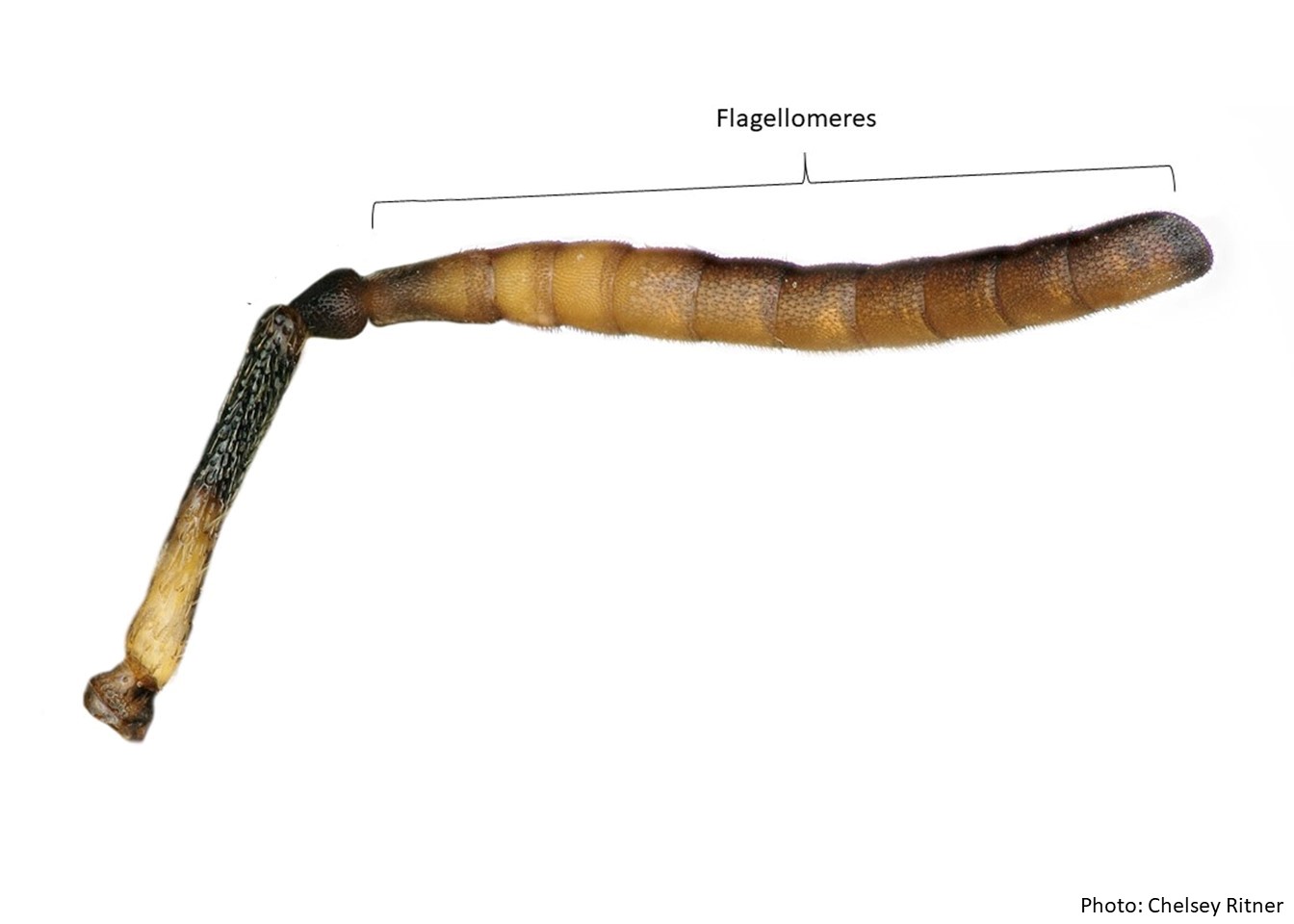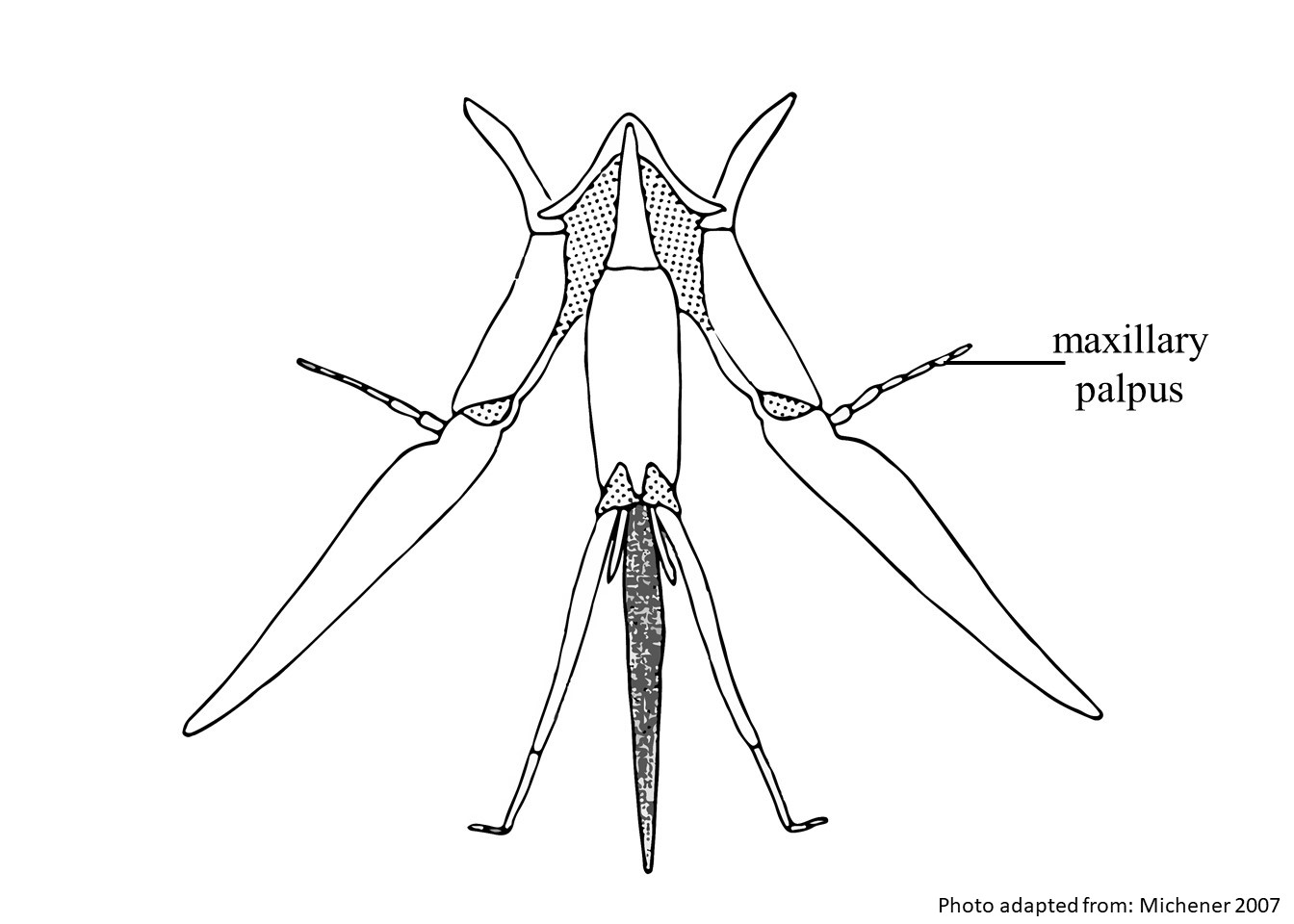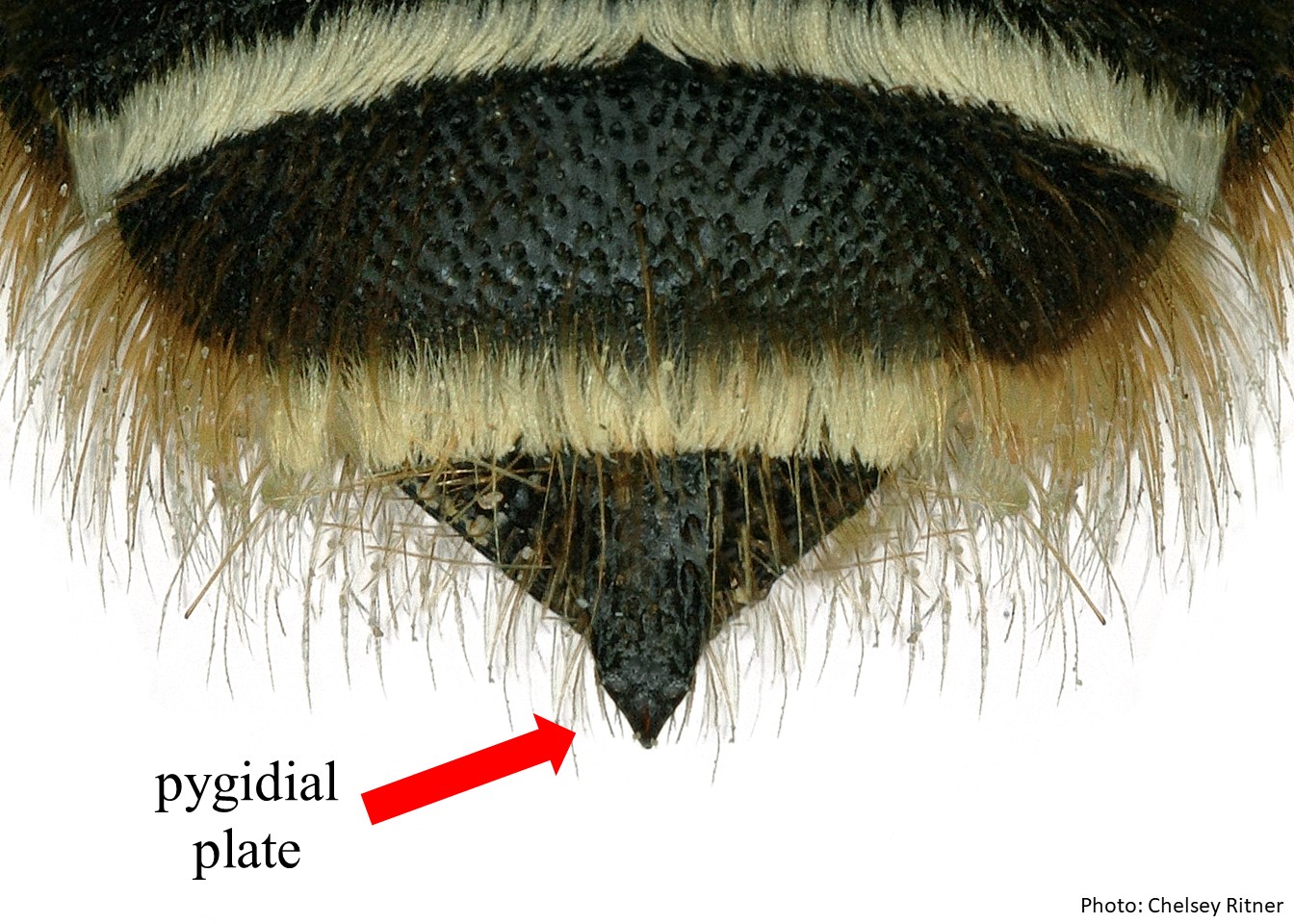Family: Megachilidae
Subfamily: Megachilinae
Tribe: Lithurgini
Genus: Trichothurgus Moure, 1949
Subgenera: none
Common name: none
Trichothurgus are generally robust, black bees that lack hair bandsbands:
usually referring to bands of hair or bands of color that traverse across an abdominal segment
on the abdomen. They often have abundant white or yellow hair on the thorax and first few tergaterga:
the segments on the top side of the abdomen, often abbreviated when referring to a specific segment to T1, T2, T3, T4, T5, T6, or T7 with contrasting black hairs on the legs and apicalapical:
with contrasting black hairs on the legs and apicalapical:
near or at the apex or end of any structure
terga, however, they can also be completely black (Michener 2007Michener 2007:
Michener, C.D. 2007. The Bees of the World (2nd ed.). Johns Hopkins University Press, Baltimore and London, 953 pp.; Sarzetti et al. 2012Sarzetti et al. 2012:
Sarzetti, L.C., J.F. Genise, and M.V. Saacute;nchez. 2012. Trichothurgus bolitophilus sp. n. (Hymenoptera, Megachilidae) a bee nesting in horse manure pads in Patagonia, Argentina. Journal of Hymenoptera Research 29: 1ndash;14.). They range in body length from 7–21 mm.
(modified from Michener 2007Michener 2007:
Michener, C.D. 2007. The Bees of the World (2nd ed.). Johns Hopkins University Press, Baltimore and London, 953 pp.)
 1.5 times as long as broad or longer.
1.5 times as long as broad or longer. longer than clypeusclypeus:
longer than clypeusclypeus: with three segments.
with three segments. absent.
absent. is hairy and toothed at the posterior margin.
is hairy and toothed at the posterior margin. with a raised, impunctateimpunctate:
with a raised, impunctateimpunctate: present.
present. present.
present.Trichothurgus may be confused with Lithurgus and Microthurge, but Trichothurgus can be differentiated by its large labrumlabrum:
part of the head abutting the clypeus, folds down in front of the mouthparts
 and high density of hairs (Michener 2007Michener 2007:
and high density of hairs (Michener 2007Michener 2007:
Michener, C.D. 2007. The Bees of the World (2nd ed.). Johns Hopkins University Press, Baltimore and London, 953 pp.).
There are no known invasives.
Little is known about the floral associations of Trichothurgus. Trichothurgus bolitophilus visits Amaranthaceae and Asteraceae, while other Trichothurgus, such as T. dubius, have been recorded to visit Cactaceae (Rozen 1973Rozen 1973:
Rozen, J.G. 1973. Life history and immature stages of the bee Neofidelia . American Museum Novitates 2519: 1ndash;14.; Sarzetti et al. 2012Sarzetti et al. 2012:
Sarzetti, L.C., J.F. Genise, and M.V. Saacute;nchez. 2012. Trichothurgus bolitophilus sp. n. (Hymenoptera, Megachilidae) a bee nesting in horse manure pads in Patagonia, Argentina. Journal of Hymenoptera Research 29: 1ndash;14.).
Trichothurgus dubius have been found nesting in dead, standing cacti forming a linear series of unlined cells, as well as in vacant nests of wasps in the subfamily Eumeninae (Rozen 1973Rozen 1973:
Rozen, J.G. 1973. Life history and immature stages of the bee Neofidelia . American Museum Novitates 2519: 1ndash;14.). Trichothurgus bolitophilus forms unlined nests with clusters of unpartitioned cells in dried horse manure that may be reused by multiple generations (Sarzetti et al. 2012Sarzetti et al. 2012:
Sarzetti, L.C., J.F. Genise, and M.V. Saacute;nchez. 2012. Trichothurgus bolitophilus sp. n. (Hymenoptera, Megachilidae) a bee nesting in horse manure pads in Patagonia, Argentina. Journal of Hymenoptera Research 29: 1ndash;14.). Multiple eggs may be oviposited per provision (Sarzetti et al. 2012Sarzetti et al. 2012:
Sarzetti, L.C., J.F. Genise, and M.V. Saacute;nchez. 2012. Trichothurgus bolitophilus sp. n. (Hymenoptera, Megachilidae) a bee nesting in horse manure pads in Patagonia, Argentina. Journal of Hymenoptera Research 29: 1ndash;14.).
Trichothurgus is restricted to southeastern South America, and generally occurs in xericxeric:
a very dry habitat
habitats (Michener 2007Michener 2007:
Michener, C.D. 2007. The Bees of the World (2nd ed.). Johns Hopkins University Press, Baltimore and London, 953 pp.). It ranges from Peru through northern Chile (Tarapacá) and Argentina (Jujuy), south to the San Jorge Gulf region of Patagonia, Argentina (Michener 2007Michener 2007:
Michener, C.D. 2007. The Bees of the World (2nd ed.). Johns Hopkins University Press, Baltimore and London, 953 pp.).
Distribution map generated by Discover Life - click on map for details, credits, and terms of use.
Michener, C.D. 2007. The Bees of the World (2nd ed.). Johns Hopkins University Press, Baltimore and London, 953 pp.
Rozen Jr., J.G. 1973. Immature stages of lithurgine bees with descriptions of the Megachilidae and Fideliidae based on mature larvaelarvae:
active immature form of an insect, especially one that differs greatly from the adult and forms the stage between egg and pupa
(Hymenoptera, Apoidea). American Museum Novitates 2527:1-14
Sarzetti, L.C., J.F. Genise, and M.V. Sánchez. 2012. Trichothurgus bolitophilus sp. n. (Hymenoptera, Megachilidae) a bee nesting in horse manure pads in Patagonia, Argentina. Journal of Hymenoptera Research 29:1-14